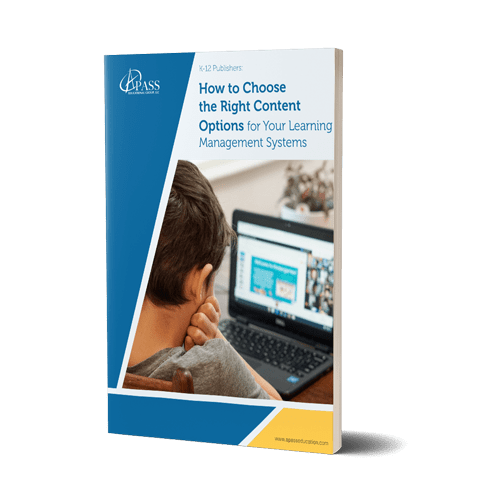Districts desire products aligned with standards. Thus, schools demand products to integrate with their learning platforms. Instructors need products that address learner variability and other student needs. Also, these products must be easy to use. Yet, districts cannot afford to invest in technology that teachers do not use. Often, teachers do not have the time and skills to add new tools. So, new tech often gathers dust in storage closets. Providers can increase educators’ adoption rates by ensuring their products support these five methods.
1.) Provide Data Interoperability for New Tech Products
So, educators need to use student data to get valuable insights about them as a learner. Teachers can mine student data to discover a learner’s interests. Then, educators can use a student’s intrinsic motivation to spark success in another area. So, teachers meet the demands of learner variability. But, educators report that many providers’ products do not integrate with their district LMS. So, educators enroll students in a provider’s tool, print a report, then hand code in results into the district’s LMS. Providers have an opportunity here. They can move products from nice-to-have tools to ones that drive student achievement. Tools that integrate with the school and district dashboards move to the top of the buy list.
2.) Support Student Privacy and Provide a Clear Privacy Policy for New Tech
Likewise, student privacy continues to drive purchasing decisions. Districts need to protect student data as much as they want to use it. So, vendors must make products that comply with district data privacy policy and legal privacy standards. Besides that, vendors must meet state and federal child protection laws. Ed-tech leaders must show districts how their products meet the Children’s Online Privacy Protection Act (COPPA) and Family Educational Rights and Privacy Act (FERPA). Moreover, providers can use compliance as a selling point. Educators do not have the time or expertise to read lengthy documents to determine if a vendor complies. So, providers help teachers by outlining how vendors utilize user data in exchange for the free use of their digital tools. Also, ed-tech product makers can present districts with a clear privacy policy. For many schools, vendors without a clear privacy policy are an immediate “no buy.”
3.) Align Standards for New Tech
Thus, teachers need easy-to-use products that help students set goals. Moreover, teachers need to identify how the product meets the standards. But, providers face other requirements. Standards vary by state. Besides that, districts have unique needs too. For example, a school district may have one school that needs ELL resources. So, providers can invest in making add-on options that prioritize learner variability when selling to school districts.
4.) Providers Back-Up New Tech Products with Learning Science
So, most educators do a web search on providers and their products. Yet, educators base buying decisions on peer recommendations. Still, educators would prefer to make buying decisions based on research and evidence. But, little information exists. Moreover, teachers do not trust the vendor’s self-promoting research. Also, educators do not believe vendors are qualified to conduct reliable research on their products. The pilots tend to be small control groups that do not consider the learner variability of most classrooms. Most vendors do not back up their claims with research founded on learning science. So, teachers look to peers in similar districts with similar classroom needs to identify potential solutions. Therefore, providers can help districts decide to buy their products by backing up and conducting studies based on learning science.
5.) Implementation and Ongoing Support
Teachers know they are taking a gamble on the product working in their classroom. Many teachers are not willing to risk trying an untested tool with students. Providers can help by clearly stating their product’s purpose, intent, and learning outcomes. Then, providers can partner with districts through implementation. Vendors can train teachers to use their products. Also, providers create training for school districts, explaining how to communicate their products to their teachers.
In sum, educators and vendors must speak a common language to assess the quality of their products. Therefore, providers supply districts with the tools to make evidence-based purchasing decisions. But, educators feel vendors are more concerned with profits. Providers build trust with districts by making products that meet these five requirements for ed-tech purchases.





